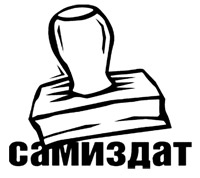Kocharyan’s timely response to Levon Ter-Petrosyan’s speech on September 21 correctly described the existing political situation in Armenia with its components. The existing president said with seeming pain that Ter-Petrosyan, who had been the symbol of the state, was becoming a simple oppositionist due to that speech.
In order to catch this “concern” spoken by Kocharyan, let’s first of all understand what a “simple oppositionist” means.
I don’t think that by saying “simple oppositionist” the existing president wanted to insult or humiliate the former president, who as he said was considered as our symbol of the state. It is more likely that his consciousness worked and he unexpectedly spoke out the political system model he has created. According to the understanding of the existing president, the authorities should stay in palaces, and the opposition, if it is not “in their pockets”, should be in the streets. According to such understanding, authorities-opposition dialogue is impossible, furthermore, debate is not possible generally since for organizing a debate there should be at least one independent and two impartial channels among the existing dozens of TV companies, where the ideas of the “simple oppositionist” and the “palace authorities” would meet.
Thus, by showing the place of the opposition, Kocharyan wanted to say that polite dialogue is impossible in our country. It is impossible not due to the fact that the opposition is in the streets, but the fact that it is where he wants to see them.
This looks very like the announcements from Moscow during the movement of Karabakh, when they called the crowd of thousands of people fighting for freedom as people “in black” and “with beard”. In the Soviet reality the opposition did not have any other place to express itself other than the streets and prisons. During the recent years when Gorbachev spoke about the “export”, again they didn’t give freedom to free people. The stage of a free man was the street, the microphone was his voice, his mass media support was samizdat, which was circulated with limited edition and tried to spread ideas from hand to hand.
Now, fifteen years after getting independence, it is again the time of the streets, high voice and samizdat. Some people send SMS’s to each other and inform about the rally on Saturday. Others ask whispering whether their friends have seen Ter-Petrosyan’s speech and suggest a DVD disc about it. It is a short scene, the first part of which you can find in mobile phones of each student or schoolchild.
There was time I was an editor of a samizdat newspaper and I remember the situation at the end of 80s and what we have now; the big difference does not matter, it is just surprising how these authorities can keep the real mass media sources closed in the existing reality.
At the beginning of this year during picture-taking for a film in Barekamavan village community of Tavush region I asked a lady working at the local post office to show me their newspapers. The lady had plenty of crosswords and only one sports newspaper. In such village communalities people watch the channels of Georgia or Azerbaijan and at the best if they have a satellite antenna, they watch the satellite broadcast of the Armenian national TV, which informs about the reality in the country as much as the national TV company of Burkina Faso.
However, there is a solution; people can just take their phones and call their friends and relatives to inform that there will be a rally on October 26 or there has been a rally, where there were many people and different issues were discussed. This will help the opposition not to be in streets as Kocharyan wants them be, but be covered by the umbrella of information technologies.

